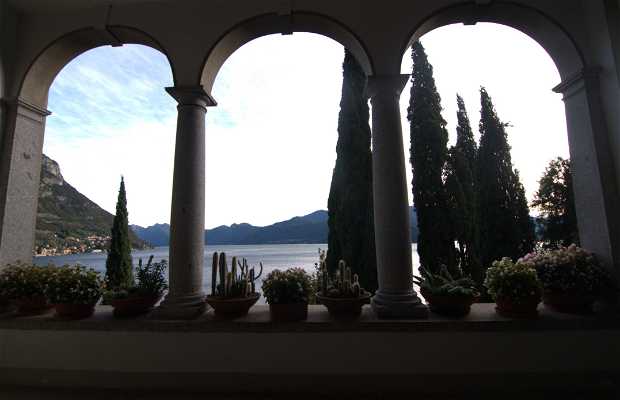Paola Sandionigi
The villa's garden pet-friendly Monastery
Il giardino di villa Monastero è pet-friendly
Il giardino di villa Monastero a Varenna è pet-friendly, come riportato sul sito www.lariobestiale.com, i cani, rispettando le regole della convivenza civile, sono ben accetti nel parco della storica dimora.
Un ampio giardino, quasi due chilometri sulla riva del lago di Como, ramo lecchese, ricco di specie botaniche particolari e rare, disposte in terrazzamenti che hanno favorito nel tempo l'articolazione del giardino in una sequenza di inquadrature sempre diverse, ma con alcuni elementi ricorrenti. Tra scalette e sbocchi sul lago si possono ammirare statue, porticati e aiuole con giochi cromatici. Il giardino avrebbe origini piuttosto antiche, come risulta dalle fonti seicentesche e settecentesche, che sottolineano la presenza di specie esotiche per il clima particolarmente mite, per quanto si ha già notizia di coltivazioni di olivo, vite, erbe aromatiche e medicinali già al tempo del monastero cistercense attorno alla fine del XII secolo.
Fin dalla sua apertura al pubblico, nel 1940, a seguito della donazione come bene pubblico da parte dei De Marchi, il giardino è stato mantenuto intatto nel suo aspetto.
The garden of Villa Monastero in Varenna pet-friendly, as reported on the website www.lariobestiale.com, dogs, respecting the rules of civil society, are welcome in the park of the historic home. A large garden, nearly two kilometers on the shore of Lake Como, Lecco branch, rich in details and rare botanical species, arranged in terraces that have fostered over time the garden division into a sequence of more and different shots, but with some elements recurring. Among ladders and outlets on the lake you can admire statues, porches and flower beds with color effects. The garden would rather ancient origins, as evidenced by the seventeenth and eighteenth-century sources, which point to the presence of exotic species to the mild climate, as it has already news of olive crops, vines, herbs and medicines already at the time of the monastery Cistercian around the end of the twelfth century. Since its opening to the public in 1940 as a result of the donation as a public good by De Marchi, the garden was kept intact in its looks.



+3




